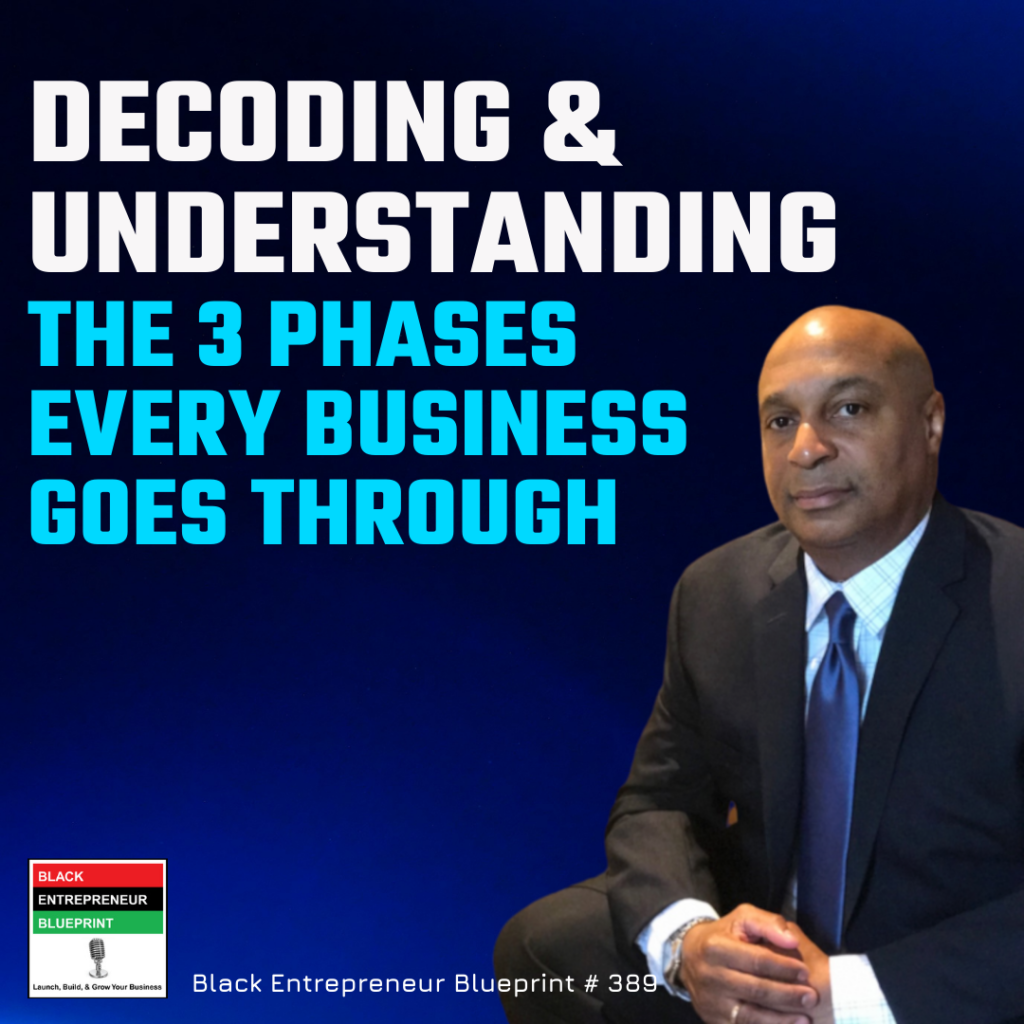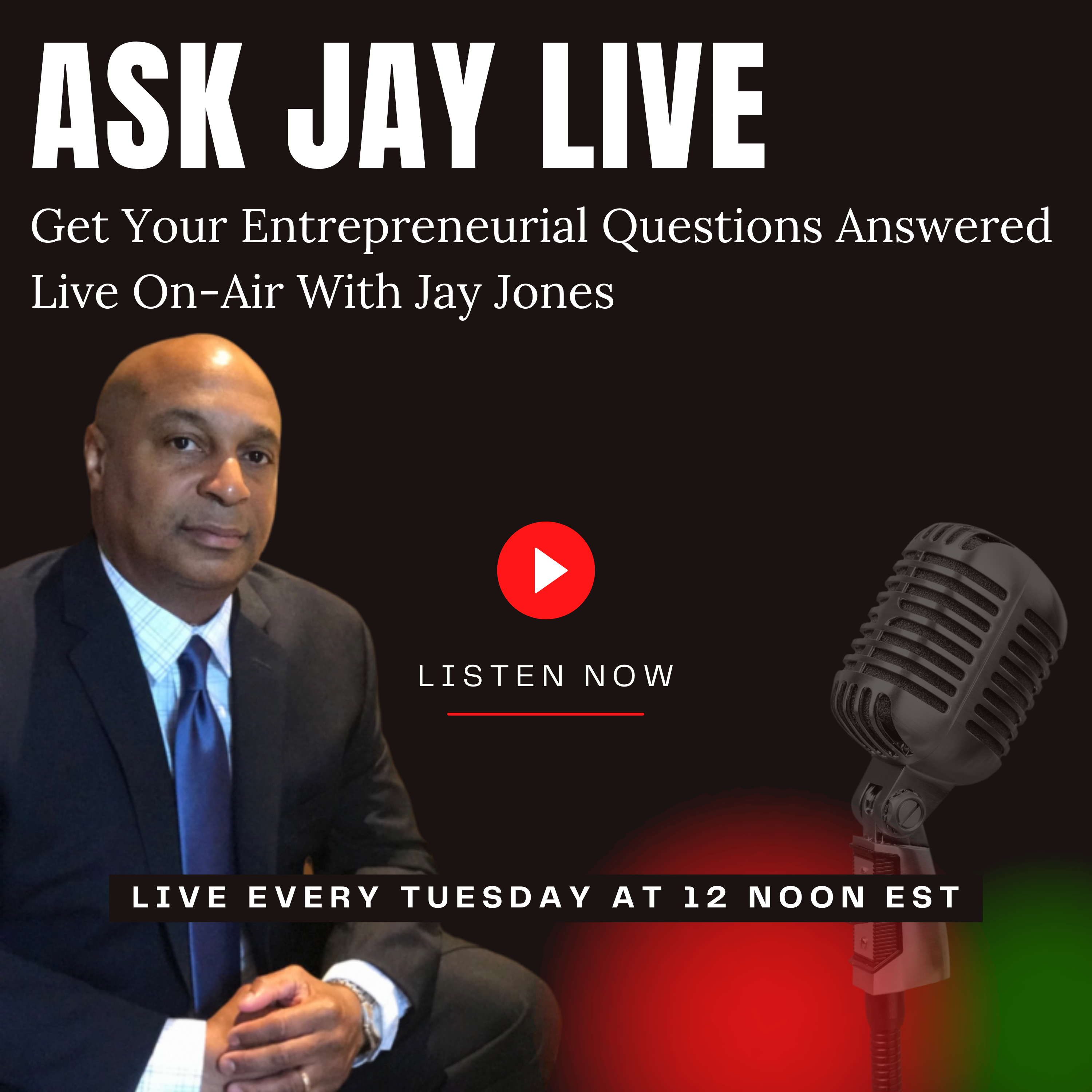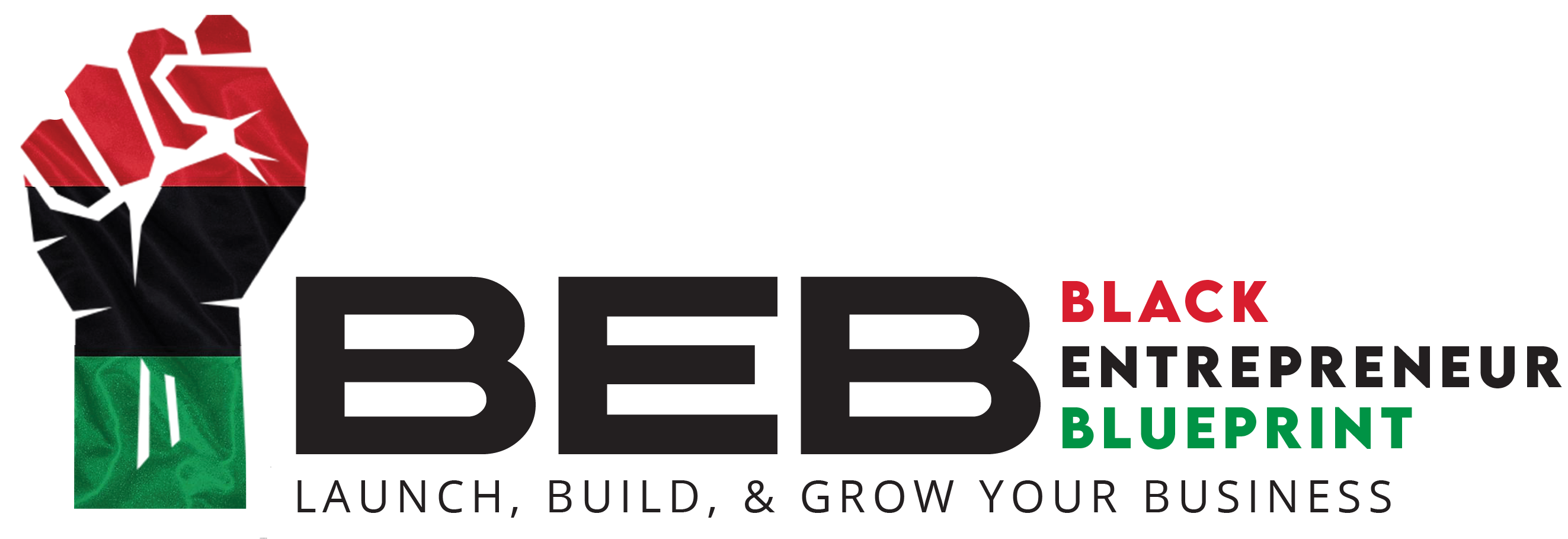Trying to build a business without understanding the phases and framework of a successful business is akin to coming into a crime drama midway through the movie and trying to solve the crime without knowing the framework of the story. On today’s Black Entrepreneur Blueprint # 389, Jay discusses and details the three phases every business goes through, and how to successfully break down each phase to help build a profitable business.

LISTEN NOW
BLACK ENTREPRENEUR BLUEPRINT SHOW NOTES – EPISODE # 389
If you are lucky and an astute business owner, your business will eventually go through three phases of maturation. Today we are going to discuss these three phases and identify the key components of each phase that are needed to build a profitable business.
THE 3 PHASES
The three phases a business goes through are:
- Launch Phase (startup)
- Build Phase (systematize)
- Grow Phase (scale)
LAUNCH (startup)
The launch phase of your business is the startup or “thinking” phase of your business. The launch phase can last anywhere from several months to a year. In this phase you will do the following:
- Business ideation – business plan, (what type of business, what are your products and services, who do you serve, sales & revenue projections, marketing plan, etc.)
- Business formation – sole proprietor, partnership, LLC, S-corp, C-corp, permits, licenses, etc.
- Tools & Software – domain names(s), website, company email (not a personal Gmail acct) email autoresponder, database software,
- Capitalization – how will you capitalize your business
- Location – where will you conduct business (office, home, etc.)
- Product / Service creation – which may include physical products inventory, digital product creation, or selling a service
- Proof of concept – will people purchase your goods and/or services? Create tests and get feedback to determine proof of concept
- Build Your Platform – your platform is a way to connect and communicate with your market
BUILD (systematize)
The build phase of your business is the systemization of your business. This is the foundation of any business. You can build your foundation on rock or sand (not building systems is considered building on sand). If your systems and processes are not sound, your business is doomed to fail. The build phase lasts several years as you continue to implement and adjust current systems and introduce new and improved systems.
- Lead Generation system – automated lead generation system and processes. Responsible exclusively for generating qualified leads
- Sales system – system used to manage, convert, and cultivate your leads into sales
- Fulfillment system – system used to fulfill your sales be it products and/or services
- Marketing system – is a system that helps promote and market your business via paid media, earned media, or owned media
- Operations system – system used to outline your standard operating procedures and processes
- Customer Service / Retention system – system used to connect with your customers and to resolve issues and get feedback
GROW (scale)
The growth phase is scaling your business. In general, we think of growth in linear terms: a company adds new resources (capital, people, or technology), and its revenue increases as a result.
By contrast, scaling is when revenue increases without a substantial increase in resources. Processes “that scale” are those that can be done en masse without extra effort – if I send an email to 10 people or 1 million, my effort is essentially the same.
- Take a real assessment of your business and yourself
What are your current metrics (sales, cost of goods, ROI, gross profits, net profits, cash flow? P & L) •What type of job are you doing running your business? (What are you good at? What are you bad at? •What do you need help with? Who do you need to hire or contract to help you?)
•What type of founder are you? – Need to be able to transition as your business grows –
- Inventor (creates and builds) – idea machine, new product ideas, visionary, creator –
- Driver (launch and grow) – source of action and acceleration, gets things done, sometimes has trouble letting go of control –
- Builder (create scalability) – is the leader of leaders, ads value by architecting and monitoring operating systems and standards –
- Guide (nurture and scale) – The keeper and sustainer of the vision and culture of the company
- Scale yourself
Transition out of the day-to-day of your business and work on your business.
• Step 1 – determine the work you love and the work you hate
• Step 2 – delegate the work you hate to do to team members or contract workers • Create task sheet to outline next steps (critical tasks, primary tasks, secondary tasks)
- Build A Scalable Operating System
An operating system is your business’s processes and procedures that support your desired outputs of the business. The old way is you being the operating system, the new way is creating a real system that works without you.
• Step 1 – Document your process for acquiring new customers from scratch (growth engine)
• Step 2 – Document your process for fulfilling your product or service after the sale is made (fulfillment engine)
• Step 3 – What are your desired outputs (company goals and objectives – in metric form to track progress)
- Create An Exit-able Business
Create a business that people will want to buy that has systems and structure in place to run without you. An exit-able business has several characteristics such as:
• Evergreen products – is a product that is always in demand as a result of the basic need it serves for your customers. Bathing soap, toothpaste, and body soap are perfect examples of evergreen products. Every niche has its set of evergreen products, which means consistent sales all year round.
• Subscription sales model – at least one of your products or services needs to be a subscription-based model to ensure consistent and predictable revenues.
• Leveraged sales – meaning to be able to create greater sales using fewer resources.
• Bankable profits – meaning a business that has actual net profits you have in a bank account(s).
• Transferrable value – your business can be easily transferred to another making it more valuable.





